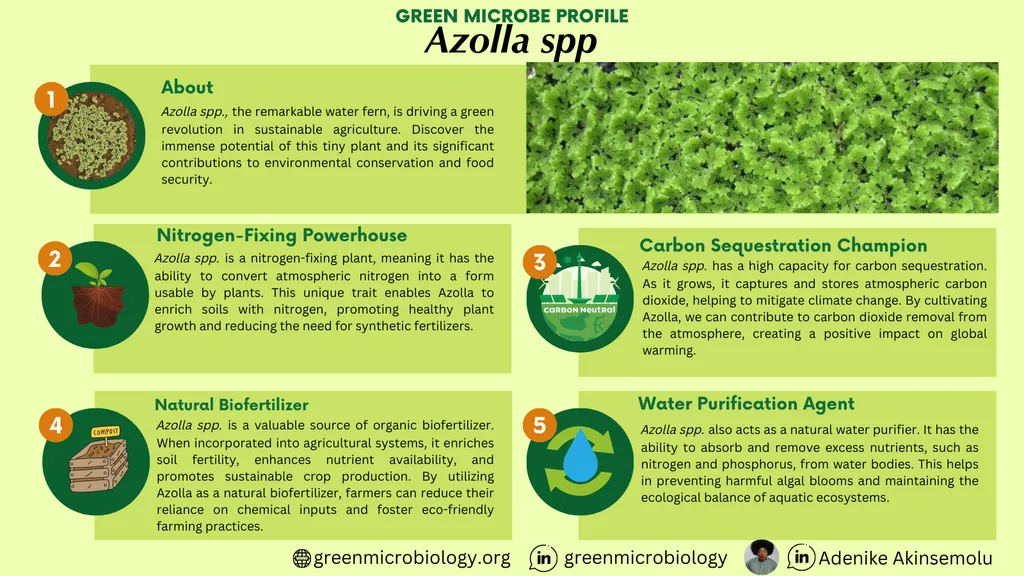In the quest for sustainable agriculture and climate resilience, scientists are turning to an unlikely ally: Azolla, a fast-growing aquatic fern. A comprehensive review published in the journal *Frontiers in Plant Science* (which translates to *Frontiers in Plant Science* in English) highlights the multifaceted role of Azolla in addressing some of the most pressing challenges in agriculture and environmental management. Led by Youquan Yang, the research synthesizes current knowledge on Azolla, emphasizing its potential to revolutionize farming practices and contribute to a greener future.
Azolla’s unique symbiotic relationship with the cyanobacterium *Anabaena azollae* allows it to fix atmospheric nitrogen, a process that significantly reduces the need for synthetic fertilizers. This not only cuts down on agricultural costs but also mitigates the environmental impact of excessive fertilizer use. “Azolla’s ability to fix nitrogen naturally is a game-changer,” says Yang. “It enhances soil health and reduces the dependence on chemical inputs, making it a cornerstone for sustainable agriculture.”
Beyond its role as a biofertilizer, Azolla offers a range of benefits. It serves as a protein-rich feed for livestock and aquaculture, providing a sustainable alternative to traditional feed sources. In rice systems, Azolla acts as a natural weed and pest suppressant, reducing the need for harmful pesticides. Additionally, it aids in water conservation, a critical factor in regions facing water scarcity.
The environmental benefits of Azolla extend beyond the farm. The fern contributes to carbon sequestration, helping to mitigate the effects of climate change. It also shows promise in reducing methane emissions from rice paddies, a significant source of greenhouse gases. “Azolla’s potential in carbon sequestration and methane mitigation is particularly exciting,” notes Yang. “It offers a dual benefit of improving agricultural productivity while combating climate change.”
Moreover, Azolla’s applications span wastewater treatment and bioremediation, where it can help clean up polluted water bodies. Its potential as a feedstock for biofuels and bioplastics further underscores its versatility. However, large-scale adoption of Azolla faces challenges, including its short shelf life, ecological risks, and preservation constraints. Addressing these issues is crucial for integrating Azolla into mainstream agricultural and environmental practices.
The research by Yang and his team underscores the need for further investigation and innovation to overcome these barriers. “While Azolla holds immense promise, we must address the challenges to realize its full potential,” says Yang. “This includes developing better preservation techniques and understanding its ecological impacts.”
As the world grapples with the dual challenges of feeding a growing population and mitigating climate change, Azolla emerges as a beacon of hope. Its multifunctional role in sustainable agriculture and environmental management offers a pathway to a more resilient and eco-friendly future. The findings published in *Frontiers in Plant Science* provide a roadmap for future research and development, paving the way for Azolla to become a key player in the global effort towards sustainability.
In the energy sector, the potential of Azolla as a feedstock for biofuels and bioplastics could open new avenues for renewable energy production. As the world transitions towards cleaner energy sources, Azolla’s role in this sector could be transformative, offering a sustainable alternative to fossil fuels. The research highlights the need for continued investment and innovation to harness Azolla’s full potential, ensuring a greener and more sustainable future for all.

